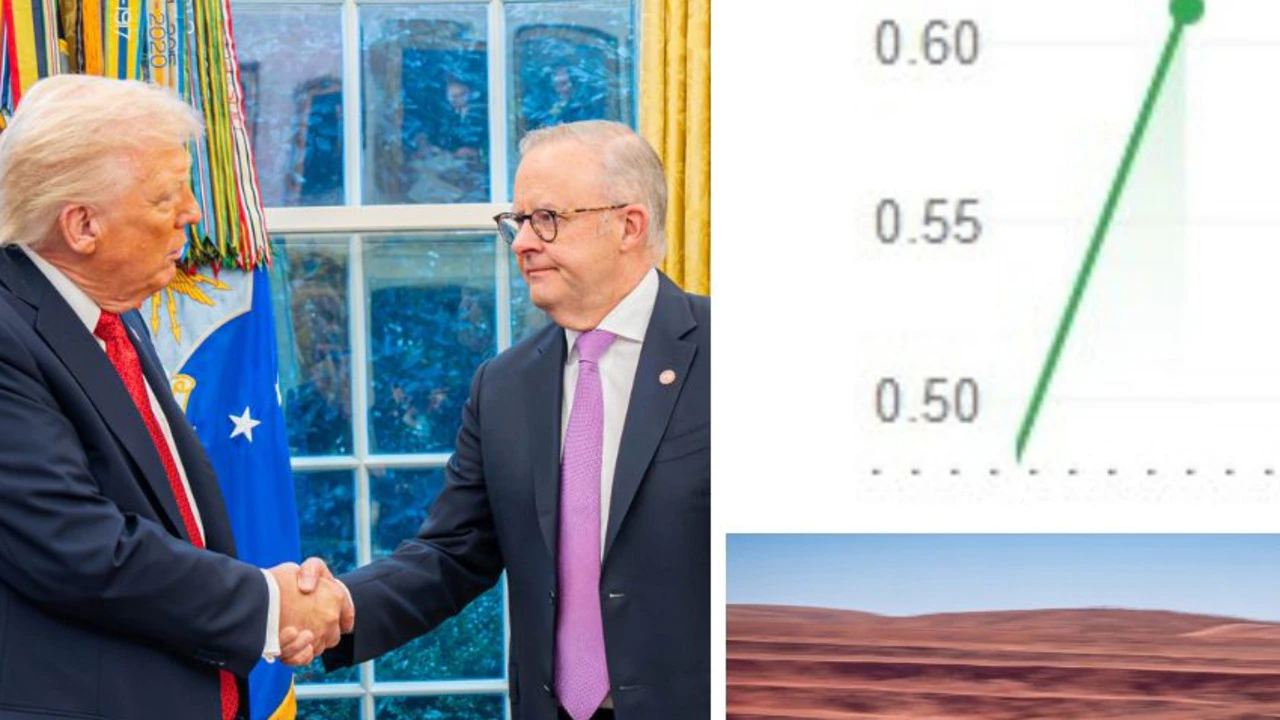Copyright The New Yorker

To understand how grudging Amy Coney Barrett’s new book is when it comes to revealing personal details, consider that one of the family members the Supreme Court Justice most often refers to is a great-grandmother who died five years before she was born. On Barrett’s desk at home, she recounts in “Listening to the Law,” she keeps a photograph of her great-grandmother’s one-story house, where, as a widow during the Great Depression, she raised some of her thirteen children and took in other needy relatives. “Looking at the photo reminds me of a woman who stretched herself beyond all reasonable capacity,” Barrett explains. “I’m not sure that I’ll be able to manage my life with the same grace that she had. But she motivates me to keep trying.” For Barrett, the mother of seven children, that effort entails setting her alarm for 5 A.M. “Our kids get up at six thirty during the school year, so I start early if I want to accomplish anything on my own to-do list,” she writes. This is what passes for disclosure from Barrett; she measures out the details of her life with coffee spoons, careful not to spill. You can almost hear the Justice’s editor pleading for something—anything—more in return for a reported two-million-dollar advance. Instead, Barrett, the last of Donald Trump’s three first-term nominees, dispenses with biography in a single, brisk chapter. Of her upbringing in New Orleans, where her Catholic family belonged to a faith community called People of Praise, we learn nothing—not even her parents’ occupations. (Her father was a lawyer for Shell Oil, her mother, a high-school French teacher turned homemaker.) Barrett and her husband, Jesse, met in law school at Notre Dame, and they later returned to South Bend—Barrett to teach, her husband to be a federal prosecutor—before Trump’s election propelled Barrett to a federal appeals-court judgeship and ultimately to the Supreme Court. She offers glimpses of their family—a son who learns to drive with the Justice’s security detail trailing behind, two children the Barretts adopted from Haiti, the “curveball” of their youngest child’s Down syndrome—but these are fleeting. Barrett has previously described having a child with special needs as “probably the thing in my life that has helped me to grow the most and that has pushed me the most”; the reader learns little about that experience. Most illuminating is Barrett’s reaction to her husband’s admonition, when the couple is deciding whether she should interview for the vacancy created by the September, 2020, death of Justice Ruth Bader Ginsburg, that they would have to “burn the boats” if she got the job—like Alexander the Great’s soldiers supposedly did on landing in enemy territory, abandoning any prospect of return. “I am happiest with old friends who knew me before I became ‘Justice Barrett,’ and I am wistful when we’re back in South Bend,” Barrett writes. “More than once, I’ve had to remind myself that we burned the boats.” It should come as no surprise that Barrett’s book disappoints. Of all the genres of unsatisfying nonfiction, books by Supreme Court Justices may be at the top of the heap. One subset is the memoir that focusses on the Justice’s early life, ending before confirmation. Justice Sonia Sotomayor’s “My Beloved World,” Justice Ketanji Brown Jackson’s “Lovely One,” and Justice Clarence Thomas’s “My Grandfather’s Son” are examples. These can be gripping narratives and helpful to understanding a Justice’s formative years, but by definition they omit what readers most want to know: what the Justice did on the Court and why she did it. Another category is the learned disquisition on the law, as in Justice Neil Gorsuch’s “A Republic, If You Can Keep It” and Justice Stephen Breyer’s “Reading the Constitution.” These, too, fall short of readers’ hopes, for the simple reason that the authors resist any temptation to rule and tell. They write about their understanding of the law and the judicial process, but when it comes to their dealings with colleagues they remain resolutely circumspect. Barrett’s book is a mashup of the two forms: memoir and personal reflection are interlaced with explanations of legal doctrine. (Her grandmother’s unwritten recipe for shrimp remoulade provides a jumping-off point for discussing the benefits of a written constitution: “Unwritten constitutions, like unwritten recipes, can be hard to pin down.”) The bulk of “Listening to the Law” consists of unexceptionable explanations of Court procedures, the legal system, and the Constitution. Barrett is willing to recite the state of the law but unwilling to offer any clues about her own views beyond what the public record has already revealed. “I’m very careful in the book—and I’m always very, very careful—I apply kind of confirmation-hearing rules,” Barrett told the Times’ Ross Douthat in a podcast interview. Anyone who watched a recent high-court confirmation hearing understands the frustration inherent in such a self-imposed limitation. She sticks to the happy talk of Chief Justice John Roberts, at his own confirmation hearing, about judges as umpires calling balls and strikes. “Once a judge is on the bench, she is a United States judge, not a Democrat or Republican official beholden to a particular administration or party,” Barrett writes. “The guiding principle in every case is what the law requires, not what aligns with the judge’s own concept of justice.” Nice words, but they elide how frequently the identity of the nominating President’s political party predicts a Justice’s vote. The meat of Barrett’s book is her defense of originalism—the notion that the Constitution should be interpreted according to the meaning of its language at the time of adoption. The originalist approach was championed during the Reagan Administration by the then Attorney General Edwin Meese, who endorsed a “jurisprudence of original intention” in which the “original meaning of constitutional provision and statutes” was “the only reliable guide for judgement.” Any other method, Meese insisted, “suffers the defect of pouring new meaning into old words, thus creating new powers and new rights totally at odds with the logic of our Constitution and its commitment to the rule of law.” In short, the original intent of originalism was a determination to roll back what Meese and others saw as the jurisprudential excesses of the Court under two successive Chief Justices, Earl Warren and Warren Burger. And Roe v. Wade, the 1973 abortion ruling, was at the top of their hit list. Through the decades, originalism has evolved from an elusive search for original “intent,” raising the problem of whose intent is to be deduced, to an examination, based on text, history, and tradition, of the document’s “original public meaning.” Barrett is appropriately modest in her claims about the degree to which adhering to the originalist approach determines the outcome of a case. “I’m not an originalist because I think that history yields easy answers or prevents bad judging,” she writes. Indeed, Barrett notes, “Given the complexity of both language and legal problems, we should not be surprised that in difficult cases, judges aiming at the same target—ordinary meaning—sometimes land in different places. Acting in good faith, judges do the best they can with the tools they have.” Barrett, like most originalists, insists that the Court’s 1954 ruling in Brown v. Board of Education can be defended on originalist grounds—the alternative is unthinkable. The “drafters and ratifiers of the Equal Protection Clause might have thought that the clause permitted a regime of ‘separate but equal’ racial segregation,” she writes. “Tough luck. The commitment to equality controls, not anyone’s expectations about how the commitment would apply.” But it is hard to square that conclusion, however laudable, with the originalist practice of looking to history and tradition to understand the Constitution’s meaning at the time the language was written. When the Fourteenth Amendment was ratified, in 1868, as the Harvard legal scholar Michael Klarman has written, African Americans “were almost universally excluded from, or segregated in, public schools.” The very Congress that proposed the Fourteenth Amendment in June, 1866, established separate schools for Black people in the District of Columbia the next month. Like her fellow-originalists, Barrett is particularly unconvincing in her discussion of various rights not expressly mentioned in the Constitution that have been deemed worthy of constitutional protection. These “unenumerated rights” include the right to marriage, to use contraception, to engage in same-sex intimacy, and, until Dobbs, to abortion. The Court has identified the source of such protections in the gauzy language of the Fifth and Fourteenth Amendments, which guard against governmental deprivation of “liberty” without “due process of law”—hence the somewhat oxymoronic term “substantive due process.” In an effort to confine the reach of that phrase, the Court has increasingly looked to historical practice; in a unanimous 1997 case rejecting a right to assisted suicide, Washington v. Glucksberg, the Justices said that an unenumerated right can be deemed fundamental, and therefore deserving of the highest degree of constitutional protection, only if it is “deeply rooted in this Nation’s history and tradition” and “implicit in the concept of ordered liberty.” The majority in Dobbs determined that the right to abortion does not meet that test. As Barrett explains in her book, “The evidence does not show that the American people have traditionally considered the right to obtain an abortion so fundamental to liberty that it ‘goes without saying’ in the Constitution.” But Barrett fails to answer the challenge posed by the Dobbs dissenters: how other unenumerated rights manage to pass this test, and what their future holds. Thomas, in a separate concurrence, said that the Justices “should reconsider all of this Court’s substantive due process precedents,” although the Court this week rejected a bid to overturn its ruling on same-sex marriage. For Barrett, being parsimonious about declaring that a right is fundamental serves the important purpose of preventing courts from overstepping their constitutional role and imposing their policy views on the country. The Court’s job, she writes, “is to respect the choices that the people have agreed upon, not to tell them what they should agree to.” What Barrett’s narrow conception of constitutional rights and constitutional interpretation misses, however, is the Court’s equally essential counter-majoritarian role: protecting individual liberties and not insisting that they be limited to the norms of a preserved-in-amber moment, one in which white men held political and economic power, women could not vote, and Black people were enslaved. As the dissenters in Dobbs wrote, “the Framers defined rights in general terms, to permit future evolution in their scope and meaning. And over the course of our history, this Court has taken up the Framers’ invitation.” A new book by the former Justice Anthony Kennedy, another amalgam of memoir and jurisprudence, serves as a well-timed counterpoint to Barrett’s. Even its title, “Life, Law & Liberty,” is an unintended retort to Barrett’s reluctance to read too much meaning into those deliberately capacious words. Where Barrett’s volume suffers from her allergy to disclosing personal details, Kennedy’s may be the victim of too much enthusiasm for it. Kennedy presents himself as “defined by the West” and rhapsodizes about “Western ideas of liberty and justice.” But the tale of the privileged son of a well-connected Sacramento lawyer and lobbyist is not the stuff of inspiring narrative, nor is it a Western analogue to Thomas’s hard-scrabble beginnings in Pin Point, Georgia, as outlined in “My Grandfather’s Son.” Kennedy relates how he, “a bookish, underweight boy,” ran errands for Earl Warren, a “family friend” and the then governor of California, when his father arranged for him to serve as a page in the state Senate while he was still in elementary school. (After Warren became Chief Justice, he invited Kennedy, then a student at Harvard Law School, for lunch in his chambers.) All this makes Kennedy’s rendition of his thirty years on the high court, beginning with his selection, in 1987, the most engaging part of the memoir. Kennedy, who, in the late eighties, was serving as a federal appeals-court judge, had known Reagan well from his Sacramento days, but he was the President’s third choice for the position, after the defeat of federal appeals-court judge Robert Bork, one of the original originalists, and the failed nomination of Bork’s colleague on the D.C. Circuit Court, Douglas Ginsburg, after reports that he had smoked marijuana while teaching at Harvard Law School. Kennedy describes his session with Reagan, Meese, and Howard Baker, who had formerly been the Senate Majority Leader and was then Reagan’s chief of staff: “Throughout the interview, Senator Baker seemed to indicate that he and the President had supported me from the beginning. Ed, now seemingly much relieved and fully on board, gave me a warm hug.” But any reservations Meese had about Kennedy were borne out in the ensuing years. The ideological gulf between Bork and Kennedy shaped the nation for the next three decades—until Barrett and the other Trump-appointed Justices undid much of Kennedy’s work. Certainly, Kennedy was a conservative within the traditional meaning of that term. He was the deciding vote—and, he confirms, the author of the unsigned opinion—in Bush v. Gore, in which the Supreme Court halted the counting of contested ballots in Florida and effectively awarded the 2000 election to George W. Bush. The decision was based on the conclusion that different standards for counting ballots in different Florida counties amounted to a violation of the equal-protection clause. Kennedy insists that partisan considerations had nothing to do with the outcome. “It was my firm conviction that the Court had decided the case in a fair and neutral way,” he writes. “For that reason, it was disappointing to me that people saw in the decision a split along political lines.” But people perceived a political division because there was one: the liberal Justices (they included Republican nominees John Paul Stevens and David Souter) voted in Gore’s favor, the conservatives in Bush’s. Kennedy also provided the fifth vote and wrote the majority opinion in Citizens United, the 2010 case that opened the door to the evisceration of effective limits on campaign contributions. His defense is unconvincing. “In these campaign finance cases, the voters are the ones with the true power,” he writes. “If they see money coming into campaigns from sources they do not like, they can demand disclosure, and they can choose to vote against the candidate.” That assessment was unduly rosy even when Citizens United was decided. Since then, the Brennan Center, a liberal public-policy institute, has tallied the total of dark-money spending in federal elections at more than four billion. But on some of the most contested issues of the day—affirmative action, abortion, and gay rights—Kennedy’s presence made all the difference. In the course of two decades, he ushered in protection for gay rights under the rubric of preserving individual dignity. That development began in 1996 with Romer v. Evans, in which the Court invalidated an amendment to the Colorado constitution that had banned protecting gay people from discrimination. (“A state cannot so deem a class of persons a stranger to its laws,” Kennedy opined.) It continued, in 2003, with Lawrence v. Texas, in which the Court overruled its decision seventeen years earlier that states could criminalize homosexual conduct. “Liberty presumes an autonomy of self that includes freedom of thought, belief, expression, and certain intimate conduct. The instant case involves liberty of the person both in its spatial and more transcendent dimensions,” Kennedy wrote in his typically flowery prose. Lawrence begat the 2013 ruling U.S. v. Windsor, which extended federal benefits to same-sex couples married under their state’s laws. Two years later came Obergefell v. Hodges, establishing a constitutional right to same-sex marriage. “The nature of injustice is that we may not always see it in our own times,” Kennedy wrote. “The generations that wrote and ratified the Bill of Rights and the Fourteenth Amendment did not presume to know the extent of freedom in all of its dimensions, and so they entrusted to future generations a charter protecting the right of all persons to enjoy liberty as we learn its meaning.” Justice Antonin Scalia responded with a dissent that was slashing even for him. “The Supreme Court of the United States has descended from the disciplined legal reasoning of John Marshall and Joseph Story to the mystical aphorisms of a fortune cookie,” he wrote. Kennedy was able to “shrug it off,” Kennedy insists, but “my children and their spouses were devastated by the tone of the dissent.” He cites Scalia’s unkindest cut, that the Court lacked “a genuine Westerner” because “California does not count.” The coda came seven frosty months later, in early February, 2016, when, Kennedy writes, “Nino said he wanted to visit me.” Eventually, their conversation “turned to the subject on both our minds: our own relationship. Nino said he had come to regret deeply the tone of his Obergefell dissent and its personal references. He apologized for being intemperate.” Scalia told Kennedy that he was about to leave on “my last long trip,” but asked if the Justices and their wives could get together for dinner. “Those parting words were the last we ever spoke to each other,” Kennedy writes. “A little over a week later, his wife Maureen telephoned us around the dinner hour. She had just received word that Nino had died in Texas.” Kennedy, in his years on a closely divided Court, was routinely identified as a “swing” Justice, a label at which he still bristles. “The cases swung, not me,” he writes. That assertion is not entirely accurate; Kennedy shifted over time, on abortion, affirmative action, and, as he acknowledges, on the death penalty for juveniles. (He upheld the practice in 1989, and voted, in 2005, to strike it down.) Kennedy is elliptical about his role in Casey v. Planned Parenthood, the 1992 abortion case, writing only that “after our conference”—the initial discussion and vote the Justices take after a case is argued—“my colleagues came to know that my own position in Casey was not yet definite.” In fact, as Evan Thomas relates in his stellar biography of the late Justice Sandra Day O’Connor, Kennedy initially sided with the other conservative Justices, indicating that he would vote to overturn Roe. A month later, after then Chief Justice William Rehnquist had drafted an opinion, Kennedy informed Justice Harry Blackmun, the despondent author of Roe, that he would join forces with O’Connor and Souter to write an opinion preserving the right to an abortion. As Kennedy explains in his book, “It is not for judges to rule on the personal morality of a choice but rather on the permissibility of it under our Constitution. And our Constitution underscores the importance of thoughtful, rational, decent decisions made by individuals and families without interference from the government.” Kennedy is more open about the emotional toll of the conflict between his Catholic beliefs and his evolving understanding about what the law requires. “Another life is involved, one that cannot speak for itself,” Kennedy writes. “Because of my ever-constant belief that life must be protected from the moment of conception, I struggled with the idea that the Constitution should allow some choice to end a pregnancy.” He debated “whether it would be wrong for me, morally, to stay on the Court if doing so would require me to rule under the law that women have the right to end a pregnancy in its early, pre-viability stage,” but concluded that quitting “would have been to say that the judicial oath to protect constitutional rights is not binding in difficult or controversial cases.” On the morning the Casey decision was issued, Kennedy recalls that he made an apologetic call to his daughter in California, then a twenty-three-year-old investment banker: “Sorry it is early. I wanted to call about today’s decision. This decision and my plurality opinion do not match our personal hopes and dreams and beliefs. But it is my duty and oath to honor the rule of law.” Kennedy’s moral anguish over abortion has a fascinating parallel in Barrett’s book. For Barrett, the tension is between Catholic teaching against the death penalty and her conclusion that capital punishment is constitutional. “The people who adopted the Constitution didn’t share my view of the death penalty, and neither do all my fellow citizens today,” she writes. “Quite the contrary: twenty-seven states authorize capital punishment, as does the federal government. If I distort the law to make it difficult for them to impose the death penalty, I interfere with the voters’ right to self-government.” In recent years, pharmaceutical companies have refused to provide drugs for lethal injections, prompting states to use alternate means of execution and raising the question of whether these new methods violate the constitutional prohibition against cruel and unusual punishments. In October, Barrett voted with her fellow-conservatives to permit the execution of an Alabama man, Anthony Boyd, by nitrogen hypoxia—effectively suffocating him, as the liberal Justices detailed in a harrowing description. Would affording Boyd “the barest form of mercy,” as Justice Sotomayor put it, by allowing his request to die by firing squad, really infringe on voters’ right to self-government? (Barrett, like the other conservative Justices, did not explain her decision to reject Boyd’s request.) Both Justices frame their conclusion as a matter of appropriate judicial modesty. Yet it is telling that Barrett’s version of restraint leads her to support a politically conservative result and to defer to the will of the majority; Kennedy’s model results in an outcome that is politically liberal and elevates individual choice. This difference gets to the most fundamental distinction between the two jurists, and the profound shift in the Court’s jurisprudence in the seven years since Kennedy’s retirement. The bolstered conservative majority—which includes two former Kennedy clerks, Gorsuch and Justice Brett Kavanaugh—has dismantled part of Kennedy’s legacy, by overturning Roe, effectively abolishing affirmative action, and declaring that the federal courts have no role in preventing partisan gerrymandering. For years, Kennedy had flirted with the notion that judges could supervise and tamp down partisan gerrymandering; Kavanaugh replaced him, and provided a fifth vote for the proposition that such mischief, though “incompatible with democratic principles,” is a political question outside the power of federal courts to resolve. If Kennedy is bothered by these developments, he does not share that disappointment with readers. Instead, he sticks to jurisprudential theory, disclaiming both the pragmatism of liberals such as former Justice Stephen Breyer and the originalism of Barrett and her colleagues. “In my view neither originalism nor untethered pragmatism has such force that the judge should choose one or the other to instruct in every case,” he writes. “As for originalism, some principles are not necessarily formulated in the words of the Constitution without considering the broader context. The world in the late 1700s was different, in many ways, and the questions the Court addresses—in the area of technology, for instance—do not always have clear answers. As for pragmatism, it may be too unclear to give helpful guidance, especially since it often is simply a way to implement some other philosophy or reach a certain desired end.” This isn’t a fully satisfying refutation of the competing methods of constitutional interpretation. For one thing, it does not adequately credit the efforts at self-discipline embodied in Breyer’s pragmatic approach—“a method that considers constitutional values, purposes and workability, not just text,” as Breyer describes it in “Reading the Constitution.” And Kennedy’s answer fails to recognize the degree to which his own theory inevitably entails applying subjective value judgments to broad phrases. The new primacy of originalism under the sway of Barrett and her fellow-conservatives provides the false allure that the Court can operate as a disinterested form of artificial intelligence—ChatGPT set to colonial times. But, as Barrett herself freely concedes, originalism is not “a right-answer generator.” What she doesn’t concede is that it inherently tilts toward a conservative outcome, leaving individual liberties, in particular, frozen in a bygone era. Kennedy’s Constitution is a better document—wiser and more flexible, as its creators intended—than the one to which Barrett would consign us. ♦



